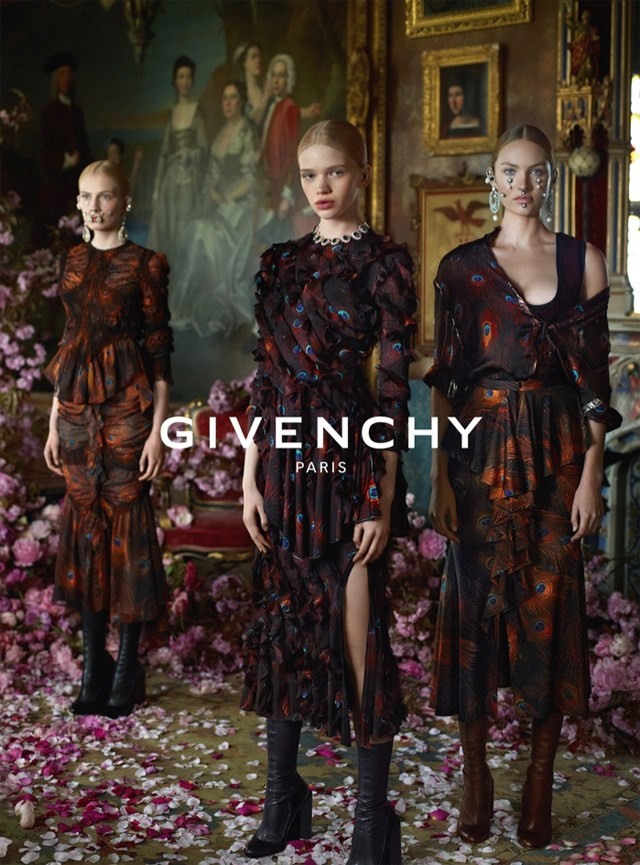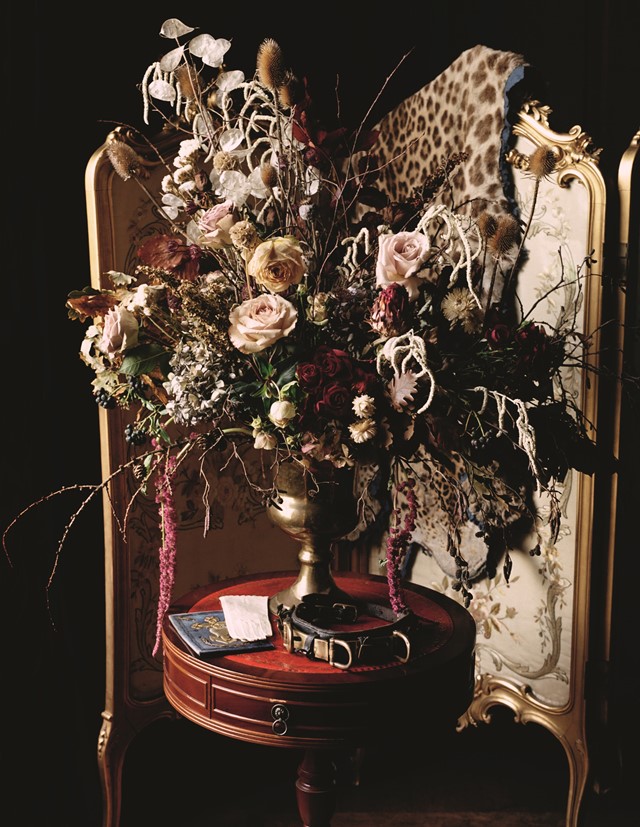AnOther sits down with Flora Starkey, whose magnificent arrangements for the likes of Paul Smith, Nick Knight and Alexander McQueen celebrate the changing beauty of British blooms
Days during fashion month are usually spent dashing from Ubers into urban spaces, and so a runway set which revels in the beauty of the natural world can bring relief from concrete claustrophobia. Chilly carparks and strip clubs played host to London’s S/S17 shows: but on the Paul Smith catwalk, tall grasses, red-hot pokers and anemones resembling miniature meadows sprang in rectangles from sections of industrial metal tiling; while at Preen by Thornton Bregazzi thousands of pressed delphiniums, forget-me-nots and narcissi littered a concrete catwalk, like flowers that had fallen from the garlands worn at pagan rituals.
The florist responsible for such scenes was the London-based Flora Starkey, whose love of homegrown British flowers and unfaltering belief in the beauty of wilting blooms, from dried seed heads to browning bracken, has earnt her collaborations with Alexander McQueen, Givenchy and the Chelsea Flower Show. Inspired by her mother’s love of gardening, Starkey branched into floristry four years ago, after careers in both illustration and fashion. She lists Great Dixter Garden and Sissinghurst Castle Garden as amongst her favourites, and has also started growing her own blooms; her #inthegarden Instagram hashtag chronicling her successes. “I mean I’m quite into weeds at the moment!” she chuckles. “There are a lot of flowers that are quite overlooked. I like using ones that you aren’t necessarily used to seeing as cuts, like flowering tobacco. It’s lovely and tall, and I love things with height. When you’ve got a beautiful tall stem in a vase you don’t really need anything else.”
Undulating daisy-chain prints and colourful hand-drawn blooms featured in Paul Smith’s S/S17 collection, with Starkey’s complementary show-set taking inspiration from the planting schemes of Piet Oudolf. The Dutch garden designer advocates the aesthetics behind growing long grasses and perennials, and encourages the appreciation of browning blooms. “I like to think of them as everlasting,” Starkey says. “I love the representation of the life cycle. Many plants are beautiful from bud to flower to seed head and even past that. Dead flowers are some of the most beautiful things to work with.”
Starkey’s appreciation of transient beauty draws inspiration from the 17th-century works of the Dutch Masters, whose still life paintings of wilting flowers, hourglasses and skulls acted as symbols of the brevity of life. This is also a trope explored in Alexander McQueen’s mens and womens A/W16 collections, with moths, ticking clocks and flowers adorning suits and dresses. Starkey is a frequent collaborator with the house: her 2015 Christmas windows used assemblages of mosses, seed heads and pinecones to frame embellished clutch bags, and evoked the paintings of Maria van Oosterwyck and Rachel Ruysch. “We both have a sense of beauty in decay and darkness,” Starkey says, “and an interest in things that aren’t conventionally pretty.”
“We stuck thousands and thousands of daisies, ferns, larkspur, delphiniums and forget-me-nots down to the concrete floor by hand the night before," explains Starkey of her work on Preen by Thornton Bregazzi’s S/S17 catwalk show. The collection was a blend of skinhead silhouettes and pagan references, featuring ruched polo shirts, pastel tulle dresses and hippie star prints. Models sported delicate decoupage like tattoos made from real flowers on their lips and décolletages, applied by the make-up artist Val Garland. “We provided the flowers and Val really worked her magic!” Starkey says. “Any show is a real collaborative effort, and the brief the brand gave me was beautiful.”

With projects that have ranged from sourcing thousands of pink petals for Givenchy’s A/W15 campaign to dripping neon paint over white orchids for the Kim Jones x Nike Lab collection launch, Starkey names dressing the London Gate at this year’s Chelsea Flower Show as her most challenging. Decorated to honour the 90th birthday of the Queen, the design featured trailing foxgloves, clematis and English roses, which curled enchantingly around the pillars of the gate. “The flowers were at the mercy of the elements for a full week and had to look good morning noon and night, throughout the heat and the rain and everything else,” Starkey explains. “We had to be very careful about the plants that we selected, but also the design took a huge amount of maintenance, which we worked on throughout the night. After that, everything else seems quite easy!”
